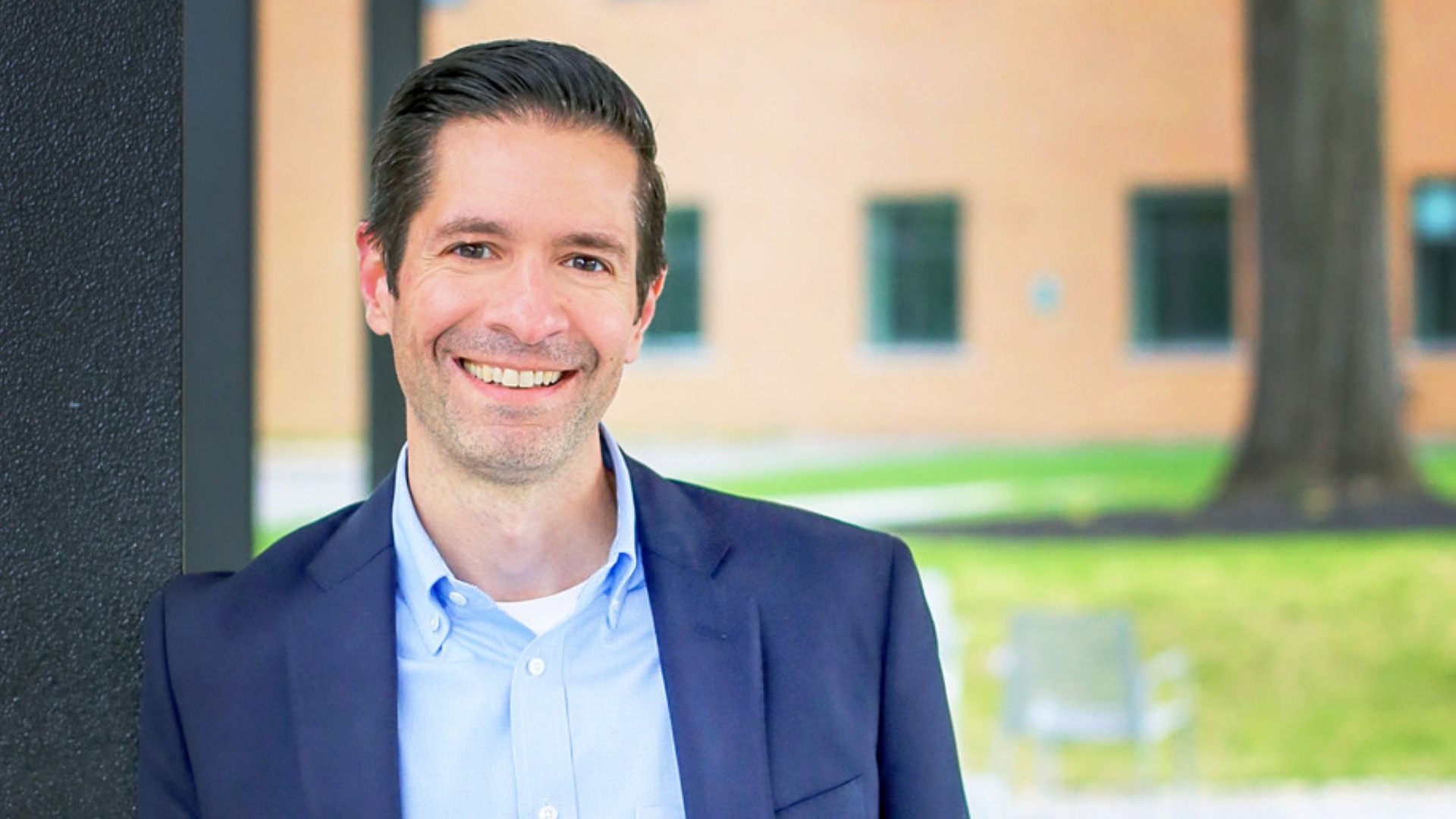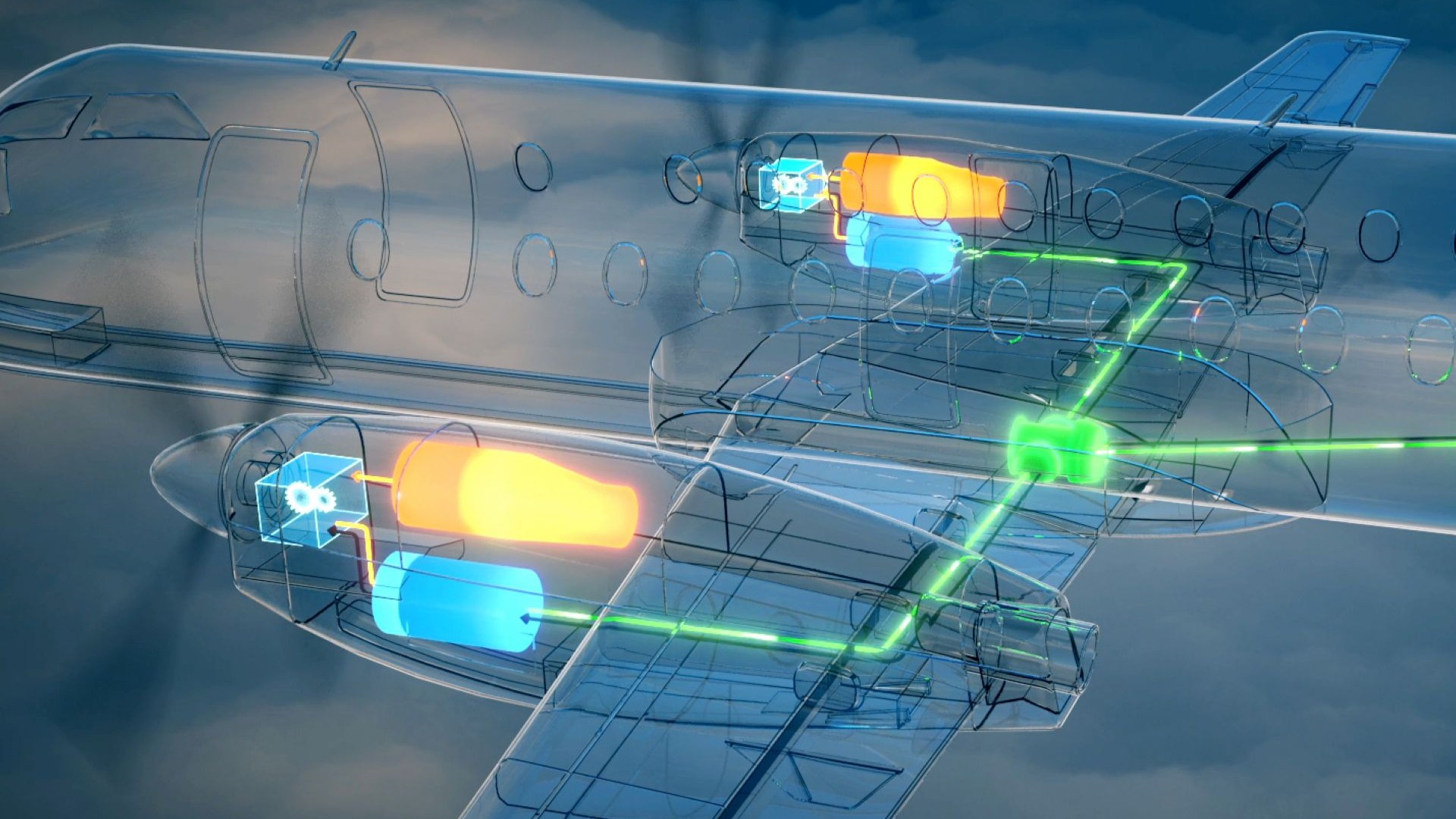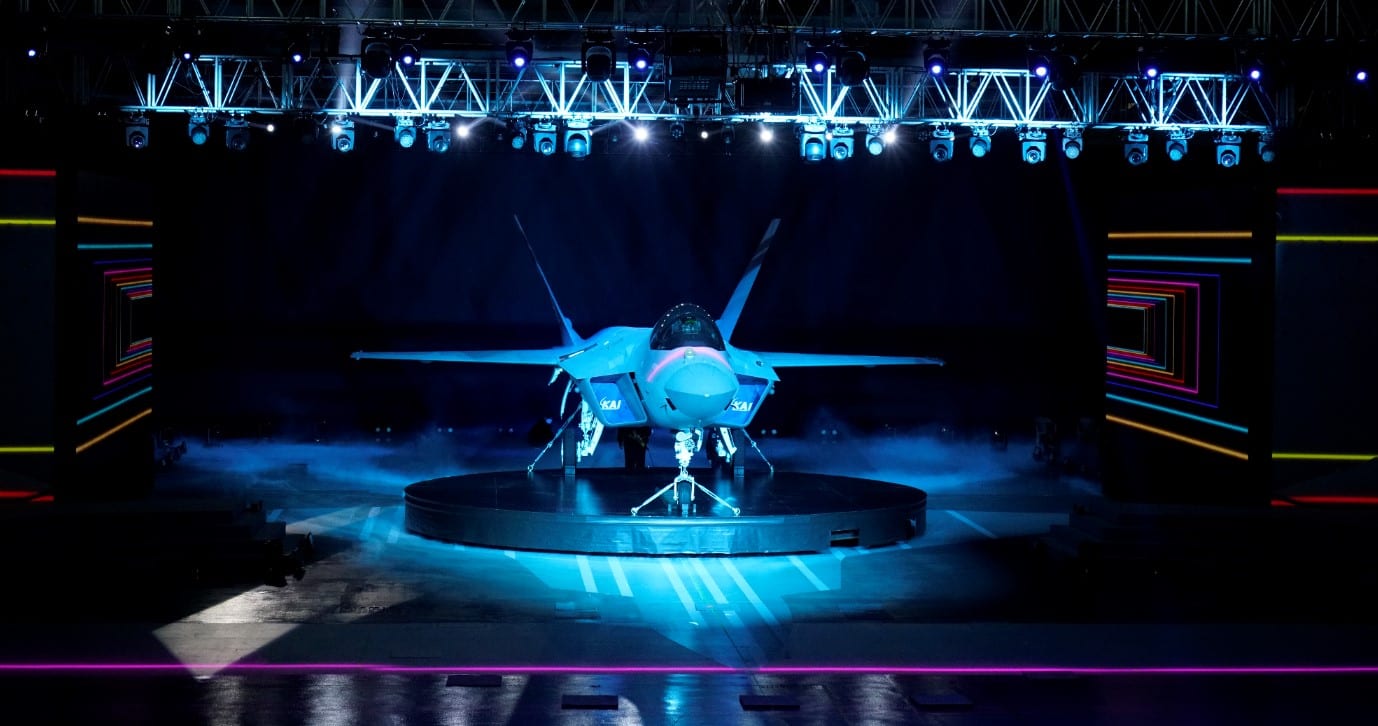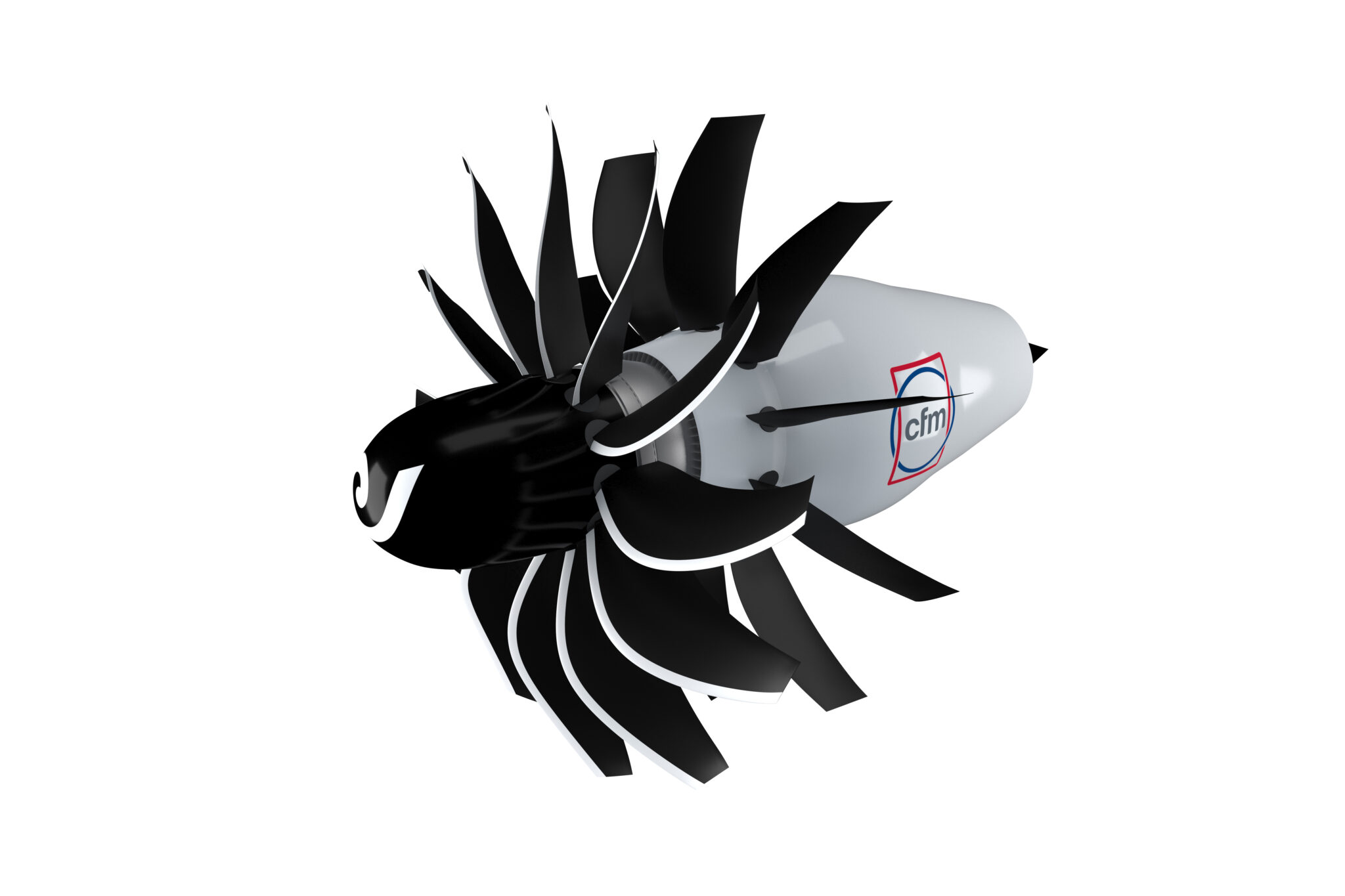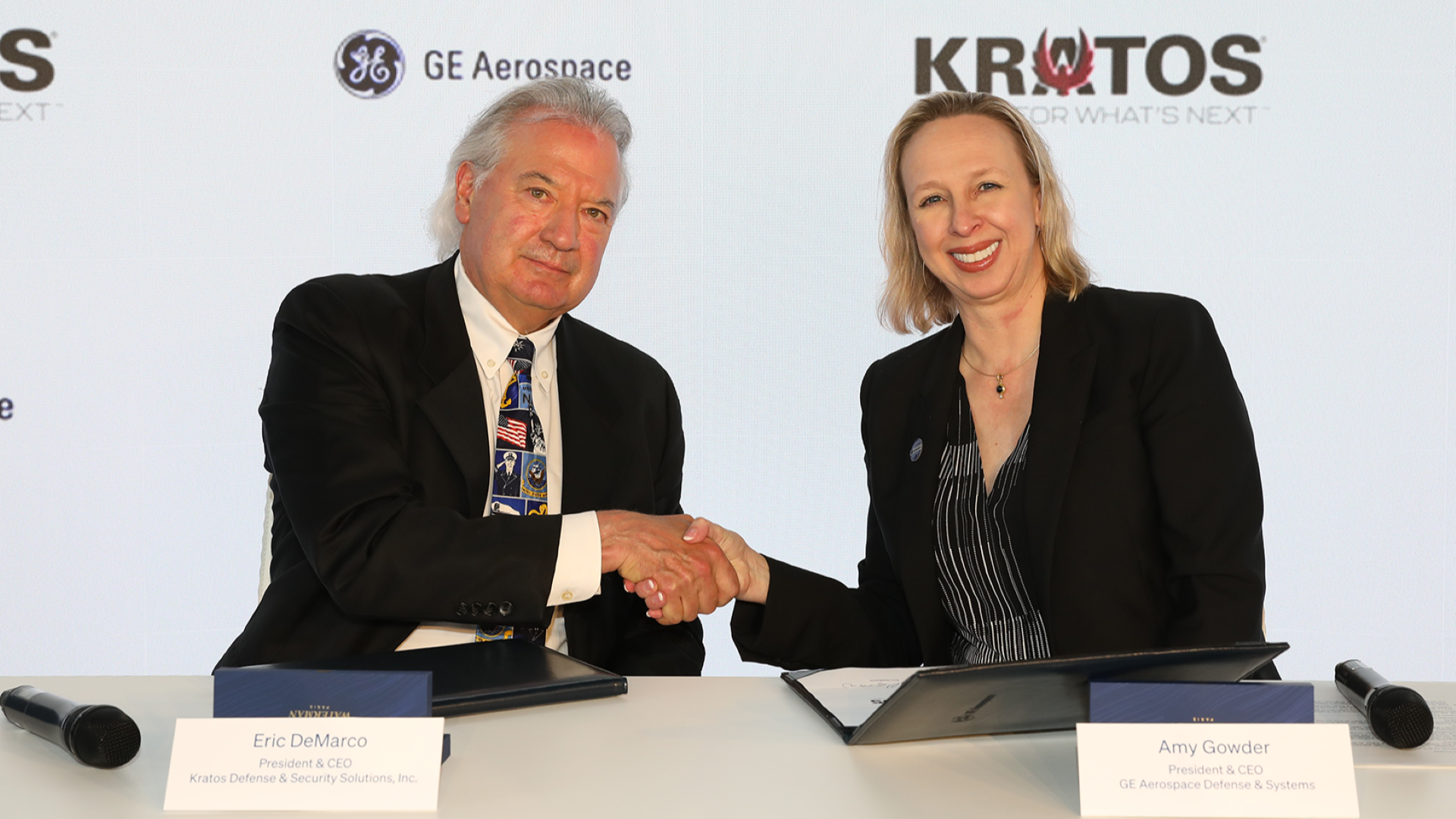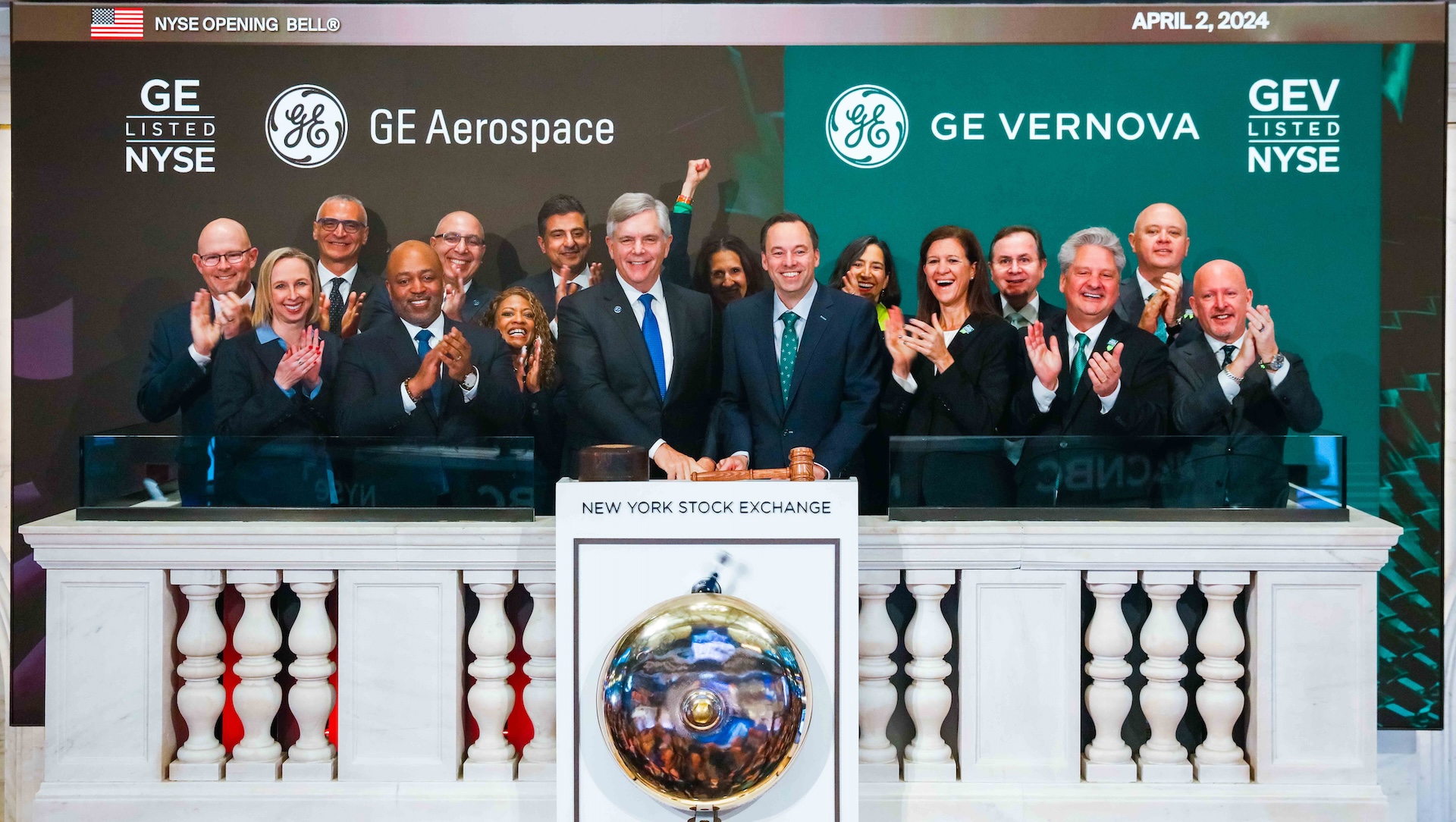Joe Vinciquerra, Leader of GE Aerospace Research, Explains How the Future of Flight Is Taking Shape in Upstate New York
June 11, 2025 | by Chris Norris
In 1996, two events gave high school senior and bike-racing fanatic Joe Vinciquerra a glimpse of the future. The first was a guidance counselor’s suggestion that, despite his plans to attend art school, someone with his aptitude in math and science should instead consider a career in STEM. The second was the debut of a revolutionary new “superbike” ridden by the USA Cycling Team at the Summer Olympics, whose odd appearance and stunning performance derived from something called “composites.” Vinciquerra discovered that this material came from the aerospace industry, and that GE Aerospace had devoted 20 years of research and development toward producing the carbon fiber composite (CFC) fan blade in its GE90 engine, a hard-won technology whose innovation was yoked to a vision of the future. Wheels turned. Vinciquerra went into aerospace engineering, studied composite materials, and now, nearly three decades later, is the GM and senior executive director of GE Aerospace Research in Niskayuna, New York, the company’s most diversified innovation hub, whose daily operations shape the future of flight.
“We focus on applied research and development for the sake of product and industrial expansion,” Vinciquerra says of GE Aerospace Research, which, as part of General Electric Company, was established in Niskayuna 125 years ago. “So, while the types of people we hire are very unique — part academician, part engineer, part industrial scientist — they’re all grounded to the mission of the place, which is meaningful, customer-focused, real-world innovation.”
Case in point: Three decades on, GE Aerospace and its partners are still the only engine makers with composite fan blades in service. That is emblematic of the dedication (as well as the time and effort) that the research center’s scientists put into their work. “When I first showed up here more than 20 years ago, we were developing artificial intelligence for image recognition in the medical industry,” Vinciquerra says. “Today we’re applying it to aerospace manufacturing and quality control. This is just one example of the long incubation time of certain technologies, which we’re developing every day.”
Vinciquerra gave us some insights into GE Aerospace’s unique legacy of technological innovation and its commitment to long-term development.
Reports by GE Aerospace: Innovation in the aerospace industry seems to be a longer-cycle play. It appears we’re in a new period of technology development, where key industry players are heads down with developing and maturing the next big engine and airframe developments to come. Is that how you see it?
Joe Vinciquerra: We have over 350,000 square feet of physical laboratory space and equipment in a highly experimental setting — everything from combustion test cells to pilot-scale materials and development facilities — and more than 75% of our 1,000-plus employees have advanced degrees in some very, very specific areas. The products we create at GE Aerospace take a tremendous amount of engineering effort and have long-cycle product development. So, while the news may be quiet at the moment, you might think of it as the calm before the storm. In 2024, the year GE Aerospace emerged as a standalone company, we saw unprecedented demand on GE Aerospace Research, and that demand continues to climb.
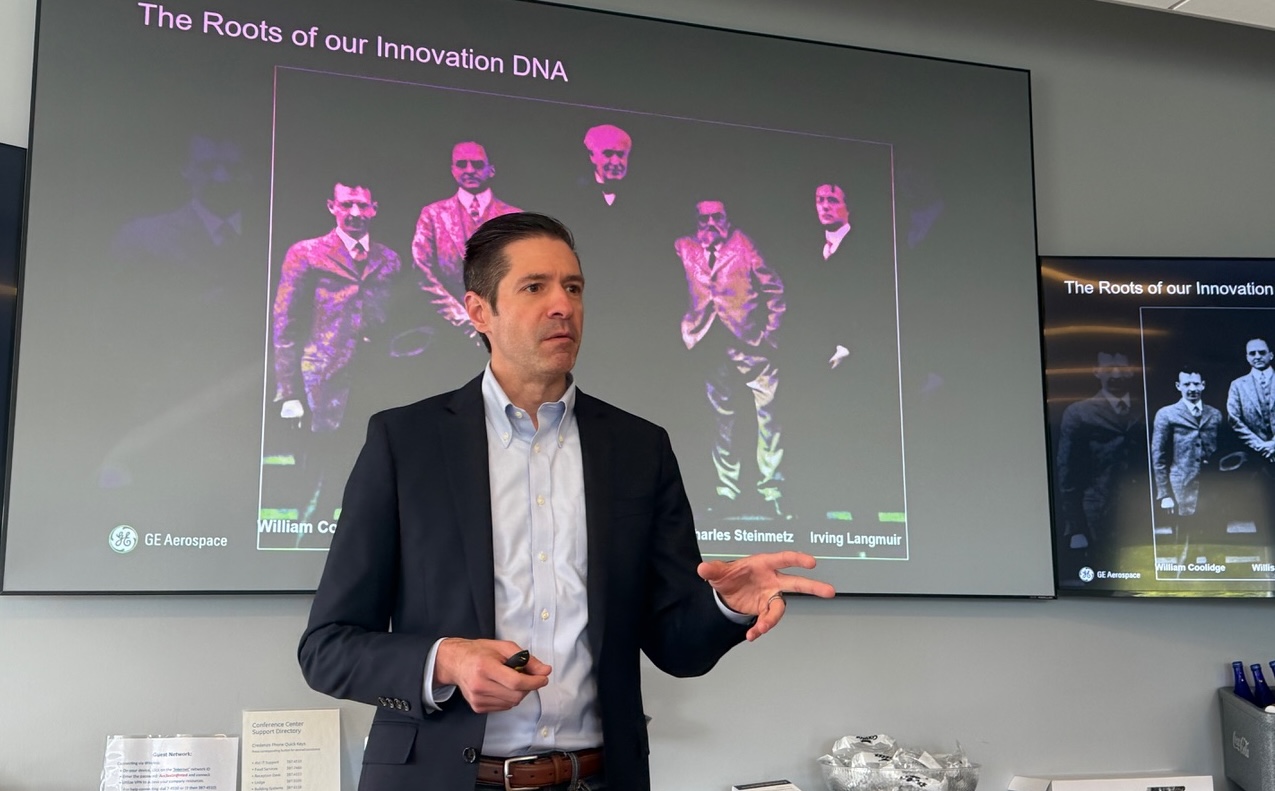
What is it about the center’s legacy that makes it so well-positioned to pursue long-term innovation?
Eight years after General Electric Company was founded [in 1892], its chief scientist, Charles Steinmetz, was concerned that its competitive advantage would erode if the company didn’t explore new technologies and business avenues. So they founded a laboratory dedicated to finding — as Thomas Edison put it — what the world needed, and proceeded to invent it.
We have a unique vantage point, because we’re far enough removed from the day-to-day, quarter-to-quarter business pressures that we can interact with customers, understand those pain points, and conceptualize technical solutions that make their lives better. Our researchers focus their efforts across the entire continuum of problem-solving for the company, so at any given time they’re working on multiple projects — helping an engine in the field, or doing research focused on the future. It’s studying what could be relevant in 20 years while solving problems that impact today.
What does the long development cycle look like at the research center?
I was going into college when the composite fan blade entered service, but GE Aerospace had been working on it for 20 years, beginning on a project in partnership with NASA. At some point they recognized the need for the technology, not only for our company but for the nation.
A decade later, something similar began with ceramics. We were researching a composite material for the U.S. Department of Energy to drive efficiency in gas turbines, which, like jet engines, relied on nickel-based superalloy parts. Since the jet engine is arguably the most engineered mechanical system on the face of the earth, one of the few ways to create a step change in its efficiency is to run the engine much hotter. So, we explored doing that with reinforced ceramic matrix composites (CMCs), which could be stronger at very high temperatures at a third of the alloys’ weight. It was very difficult to mature that material technology, but week after week, month after month, we experimented to ultimately produce a step change in thermal capability. This helped make the CFM LEAP engine* such a success, and it signifies an important technology differentiator. It’s about improving technologies over the long haul for industrial application that ultimately helps deliver step changes in capability, as we did with the CFM LEAP engine. The application of CMCs and other innovation firsts like the additively produced (3D-printed) fuel nozzle tip contributed significantly to the 15% increase in fuel efficiency the CFM LEAP delivered over its predecessor engine.
One reason the GE9X engine is 10% more efficient than the GE90 engine is because of the evolution of the same technologies: composite fan blades, CMCs, and the additive manufacturing developments that enabled us to consolidate 300 individual parts on the GE90 down to just seven parts on the GE9X engine. The ability to create these multifunctional structures is part of what makes our design and manufacturing so excellent.
What are some ways GE Aerospace might shorten this long development runway?
We partner extensively with government and academia to accelerate our innovation. Currently, for example, we have joint activity with the Department of Energy leveraging the Oak Ridge National Lab’s supercomputer, Frontier. This is the first exascale supercomputer on earth. Imagine a stack of graphics processing units as far as the eye can see acting as one, running one quintillion calculations per second. Frontier can run simulations like the world has never known, and we’re exercising it to simulate extremely complex physical phenomena using computational fluid dynamics for aerodynamic design, acoustics, and more. Where in the past we’d have to model the phenomena, test, calibrate, and then model again, Frontier lets us do this on a timescale orders of magnitude more quickly and with far fewer physical tests; it literally takes years off our design cycle. The numerical methods required to take full advantage of Frontier began at GE Aerospace Research decades ago.
The next step will be a fusion of supercomputing and artificial intelligence (AI): simulating physical phenomena with vastly greater efficiency and layering on generative AI and other methods of multi-objective optimization. That’s another chunk of years coming off what is historically a very long design cycle. I think that’s what sets our research center apart — we look for every possible way to get to a quicker answer.
What innovations are on the horizon?
The technologies we’re advancing through the CFM RISE** development and demonstration program represent a platform with an unprecedented number of new innovations being developed at the same time. The Open Fan architecture requires the use of supercomputing tools and decades of field experience with composite fan blades to design blades whose sweep characteristics enable the Open Fan architecture to be potentially quieter than today’s best in class. And engine compact core technology benefits from decades of experience with CMCs.
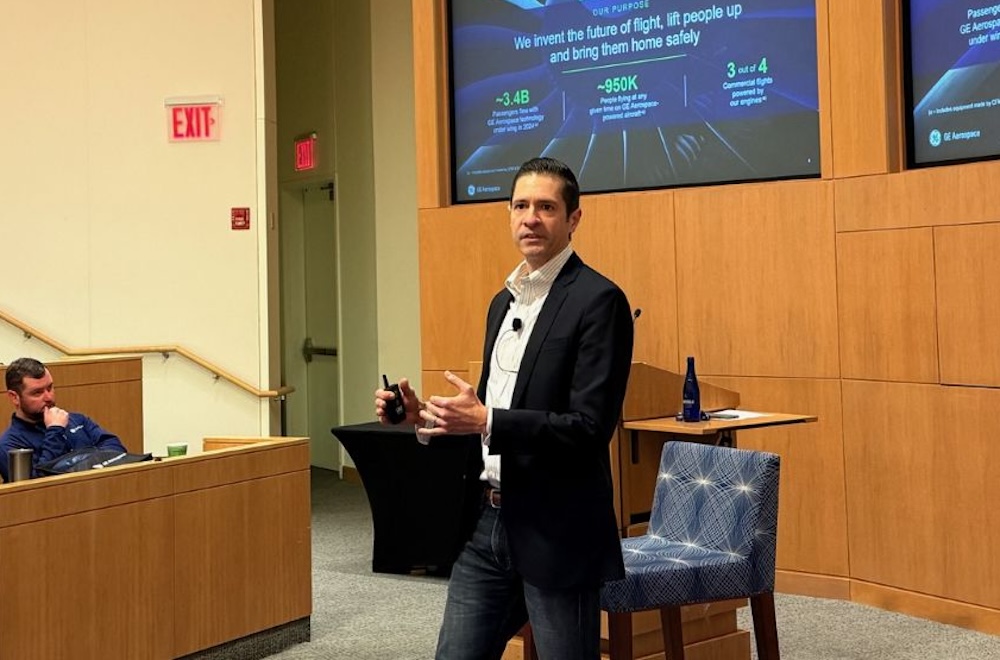
In what other ways is AI being put to use?
The assisted defect recognition we’re developing for manufacturing and repair stems from AI work we did in the early 2000s for image recognition in healthcare. And digital twin technology had a similar gestation period.
GE Aerospace is one of the aerospace industry’s top AI patent holders. We leverage AI to accelerate the physical science development, whether it’s engineering or truly physical science.
The MACH (Materials Architectures and Characterization for Hypersonics) program with the Defense Advanced Research Projects Agency (DARPA) began with our use of AI to research new high-entropy alloys that might allow hypersonic vehicles to withstand the heat of traveling at more than five times the speed of sound. These alloys are incredibly unstable and extremely hard even to chemically put together. If we’d been using conventional methods for the DARPA problem, we would have expected to spend a year developing maybe a dozen new compositions that would work. Using machine learning, we developed over 250 of them, some of which might be able to withstand temperatures thousands of degrees hotter than alloys today.
High-entropy alloys, hypersonics, AI … It all sounds a bit like science fiction.
That’s the exciting thing about developing advanced technologies: You’re right on the edge of what’s possible. At the end of the day, we’re a physical science–based industry. We build big things that fly, and we need to do so — always — with safety as our first priority. Because it’s such a necessarily highly regulated environment, the opportunity to innovate can feel more constrained over time. You learn in every generation, with every iteration. That allows us to keep turning that wheel so that something like the RISE program can be brought to fruition, where the state of the art and the state of the science merge and you can drive a revolutionary step change.
*The CFM LEAP engine is made by CFM International, a 50-50 joint company between GE Aerospace and Safran Aircraft Engines.
** Revolutionary Innovation for Sustainable Engines (RISE) is a technology development program of CFM International. It is not a product.
